-
Doctors
-
Specialities & Treatments
Centre of Excellence
Specialties
Treatments and Procedures
Hospitals & Directions HyderabadCARE Hospitals, Banjara Hills CARE Outpatient Centre, Banjara Hills CARE Hospitals, HITEC City CARE Hospitals, Nampally Gurunanak CARE Hospitals, Musheerabad CARE Hospitals Outpatient Centre, HITEC City CARE Hospitals, Malakpet
HyderabadCARE Hospitals, Banjara Hills CARE Outpatient Centre, Banjara Hills CARE Hospitals, HITEC City CARE Hospitals, Nampally Gurunanak CARE Hospitals, Musheerabad CARE Hospitals Outpatient Centre, HITEC City CARE Hospitals, Malakpet Raipur
Raipur
 Bhubaneswar
Bhubaneswar Visakhapatnam
Visakhapatnam
 Nagpur
Nagpur
 Indore
Indore
 Chh. Sambhajinagar
Chh. SambhajinagarClinics & Medical Centers
Book an AppointmentContact Us
Online Lab Reports
Book an Appointment
Consult Super-Specialist Doctors at CARE Hospitals

Varicose Veins
Varicose Veins
Best Varicose Veins Treatment in Hyderabad, India
Varicose veins are twisted and bulging veins in the legs. Varicose veins can affect any superficial vein, but the veins in your legs are the most commonly affected. This is because standing and walking upright puts more strain on your lower body's veins.
Varicose veins and spider veins — a typical, minor version of varicose veins — are an aesthetic problem for many people. Varicose veins can cause agonising pain and discomfort in certain persons. Varicose veins can sometimes lead to more serious issues.
Self-care techniques or medical treatments to seal or eliminate veins may be used as part of your treatment.
Symptoms
Varicose veins may or may not be painful. The following signs indicate varicose veins.:
-
Veins have a deep purple or blue colour.
-
Veins that seem twisted and bulging, frequently like cables on the legs
-
Here are some instances of painful signs and symptoms:
-
Legs that are achy or heavy to the touch
-
Lower leg-burning, aching, muscular cramps, and oedema
-
Pain that worsens after sitting or standing for an extended amount of time
-
Itching in or around a vein or veins
-
Varicose veins cause skin discolouration.
Spider veins are similar to varicose veins, except spider veins are smaller. Spider veins are red or blue and are located closer to the skin's surface.
Spider veins are most typically found on the legs, although they can also be found on the face. They vary in size and frequently resemble a spider's web.
When should you see a doctor?
Self-care measures like exercising, elevating your legs, and using compression stockings can help you manage the pain of varicose veins while also preventing them from worsening. However, if you're worried about the appearance and feel of your veins, and self-care techniques haven't prevented your disease from worsening, contact your doctor.
Causes
Varicose veins are caused by faulty or damaged valves. Arteries transport blood from your heart to your tissues, whereas veins return blood from the rest of your body to your heart, allowing the blood to be recirculated. The veins in your legs must battle against gravity to return blood to your heart.
Lower leg muscle contractions operate as pumps, and elastic vein walls aid blood flow back to the heart. As blood rushes toward your heart, tiny valves in your veins open and seals to prevent blood from going backwards. Blood can flow backwards and pool in the vein if these valves are weak or broken, stretching or twisting the veins.
Risk Factors
Varicose veins are more likely to form if you have the following factors:
-
Age. Varicose veins become more common as people become older. As you become older, the valves in your veins that help control blood flow wear off. Because of this wear, the valves ultimately allow some blood to flow back into your veins, where it collects, rather than up to your heart.
-
Sex. Women are more prone than males to getting this disease. Female hormones relax vein walls, therefore fluctuations in hormones before your period, during pregnancy, or throughout menopause might be an influence. Hormone therapy, such as birth control pills, may raise your chances of developing varicose veins.
-
Pregnancy. The volume of blood in your body grows throughout pregnancy. This shift benefits the developing fetus, but it also has the unintended consequence of causing larger veins in your legs. Hormonal changes that occur during pregnancy may also be a factor.
-
History of the family.
-
Obesity. Obesity puts additional strain on your veins.
-
Long periods of standing or sitting are not advised. When you're in the same posture for a long time, your blood doesn't circulate as well.
Diagnosis
To diagnose varicose veins, your doctor will likely examine your legs while you're either sitting or standing, looking for visible veins and asking about any pain or symptoms you may have.
Your doctor might also recommend an ultrasound to check blood flow. This noninvasive test uses sound waves to create images of your veins, allowing the doctor to see how blood is circulating.
In some cases, a venogram may be performed for a more detailed view. This involves injecting a special dye into your legs and taking X-rays, which help your doctor assess blood flow.
Tests like ultrasounds and venograms are important to rule out other issues, such as blood clots or blockages, that could be causing swelling and discomfort in your legs.
Treatment
While varicose veins cannot be completely cured, there are treatments available to diminish their appearance and alleviate discomfort:
- Leg Elevation: To enhance blood circulation and reduce vein pressure, it's advisable to raise your legs above your waist multiple times during the day.
- Elastic Stockings: Supportive stockings or socks exert pressure on your veins, mitigating discomfort. This compression prevents vein expansion and promotes better blood flow.
- Injection Therapy (Sclerotherapy): In sclerotherapy, a medical professional injects a solution into the affected vein. This solution induces the vein walls to bond together, ultimately transforming the vein into scar tissue, and causing it to fade away.
- Laser Therapy: In a minimally invasive procedure known as endovenous thermal ablation, healthcare providers employ a catheter (a lengthy, slender tube) and laser to close off the damaged vein.
- Vein Surgery: These procedures, also referred to as ligation and stripping, involve a surgeon tying off the affected vein (ligation) to prevent blood from pooling. In some cases, the surgeon may opt to remove (strip) the vein to reduce the chances of varicose veins reoccurring.
- Sclerotherapy: This involves injecting a solution into the affected veins that causes them to collapse and gradually fade away. It's commonly used for smaller varicose veins.
- Ultrasound-Guided Foam Sclerotherapy: A foam version of sclerotherapy is used for larger veins and is guided by ultrasound to ensure precise treatment.
- VenaSeal: A newer technique where a medical adhesive is applied inside the veins to close them off. It's less invasive and involves fewer recovery requirements.
Complications
Varicose vein complications can include the following, however, they are uncommon:
-
Ulcers: Near varicose veins, particularly near the ankles, painful ulcers can occur on the skin. Before an ulcer occurs, a discolored patch on the skin generally appears. If you fear you've developed an ulcer, see your doctor right away.
-
Clots in the blood: Veins deep within the legs can occasionally expand. In such circumstances, the afflicted limb may enlarge and become uncomfortable. Any chronic leg discomfort or swelling should be checked up by a doctor since it might be a sign of a blood clot, also known as thrombophlebitis.
-
Bleeding: Veins close to the surface of the skin can sometimes rupture. There is normally relatively mild bleeding as a result of this. Any bleeding, however, needs medical treatment.
Home Remedies
A person can take steps at home to alleviate pain and prevent varicose veins from getting worse. These steps include:
- Engaging in regular exercise
- Maintaining a healthy weight
- Elevating the legs
- Avoiding standing or sitting for long periods
Additionally, there are several over-the-counter natural treatments, typically in the form of creams and emollients, that can help ease pain, improve comfort, and enhance the appearance of varicose veins.
Prevention
Varicose veins are impossible to totally avoid. Improved circulation and muscular tone, on the other hand, may lower your chance of developing varicose veins or acquiring new ones. Varicose veins can be avoided by following the same actions you would take to cure them at home, such as:
-
Exercising
-
Maintaining a healthy weight
-
Eating a low-salt, high-fibere diet
-
High heels and tight hosiery should be avoided.
-
Raising your legs
Your doctor will most likely examine your legs and visible veins while you are seated or standing to identify varicose veins. They could inquire about any discomfort or symptoms you're experiencing.
Your doctor may use an ultrasound to assess your blood flow. High-frequency sound waves are used in this noninvasive diagnostic. It enables your doctor to examine the flow of blood in your veins.
A venogram may be performed to further analyse your veins, depending on the location. Your doctor will inject a special dye into your legs and take X-rays of the region during this exam. The dye appears on X-rays, allowing your doctor to see how your blood is moving more clearly.
Ultrasounds and sonograms are used to make sure that the discomfort and swelling in your legs aren't caused by something else, such as a blood clot or a blockage.
People with varicose veins have a positive outlook.
Varicose veins usually worsen with age. Even if you make the required lifestyle modifications to control and manage your pain, this is inevitable. While they are ugly, they seldom result in long-term medical issues.
Varicose veins can cause ulcers or sores on your legs, blood clots, or persistent inflammation in some people. Your veins may rupture if you have severe disease.
You are advised to get a doctor's appointment in case you have any of these symptoms. They may then recommend a more active course of action, such as surgery.
Our Doctors
-
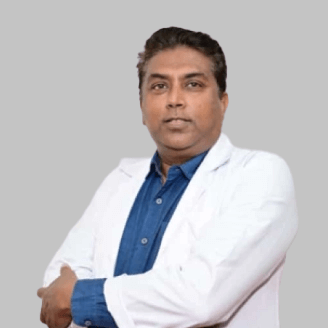
Dr. Tarun Gandhi
MS, FVES
Vascular & Endovascular Surgery
View More -
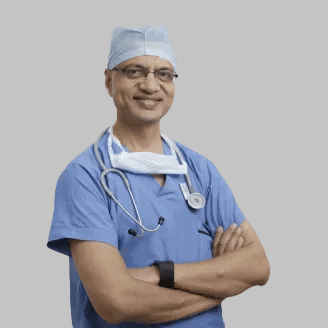
Dr. P C Gupta
MS
Vascular & Endovascular Surgery
View More -
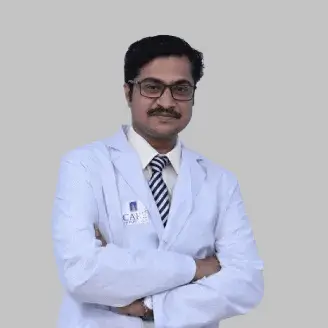
Dr. Ashish N Badkhal
MBBS, MS, MCh
Vascular Surgery
View More -
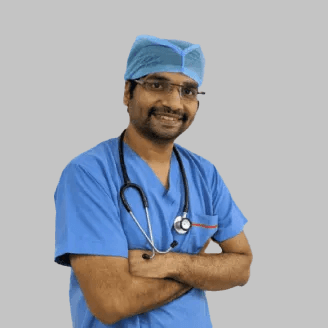
Dr. Ashok Reddy Somu
MBBS, MD, FVIR
Vascular & Interventional Radiology
View More -
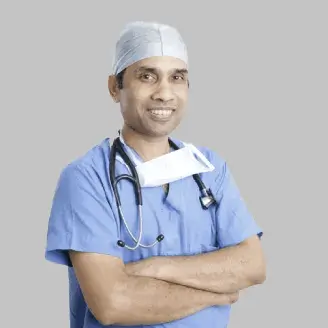
Dr. B. Pradeep
MBBS, MD, DNB, FRCR CCT (UK)
Vascular & Interventional Radiology
View More -
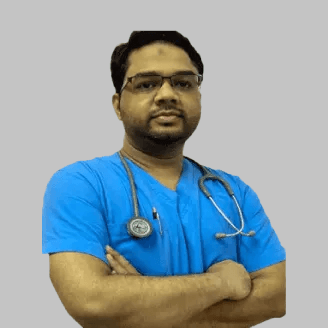
Dr. Mustafa Razi
MBBS, MD
Vascular & Interventional Radiology
View More -
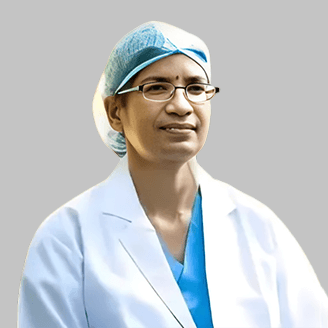
Dr. N. Madhavilatha
MBBS, MS, PDCC
Vascular & Endovascular Surgery
View More -
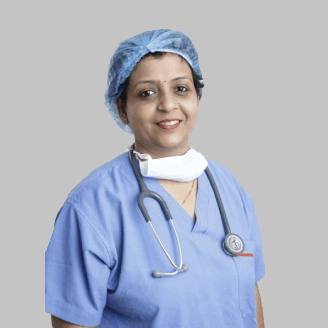
Dr. Pritee Sharma
MBBS, DNB (General Surgery), DNB (Peripheral Vascular Surgery)
Vascular & Endovascular Surgery
View More -
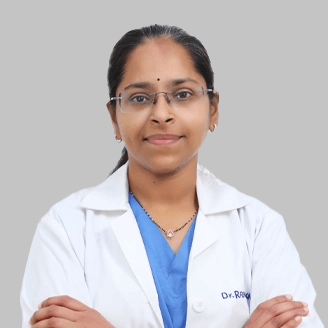
Dr. Radhika Malireddy
MBBS, DNB (General Surgery), DrNB (Plastic & Reconstructive Surgery), Post-Doctoral Fellowship in Diabetic Foot Surgery
Vascular & Endovascular Surgery
View More -
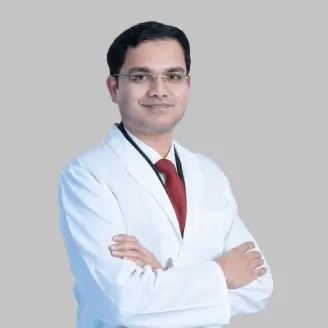
Dr. Rahul Agarwal
MBBS, DNB (General Surgery), FMAS, DrNB (Vasc. Surg)
Vascular & Endovascular Surgery
View More -
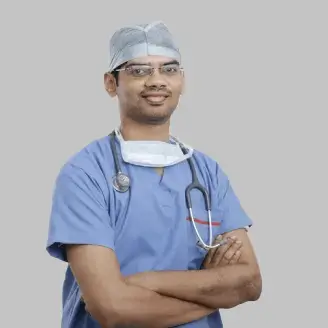
Dr. S. Chainulu
MBBS, DNB (Radio-Diagnosis)
Vascular & Interventional Radiology
View More -
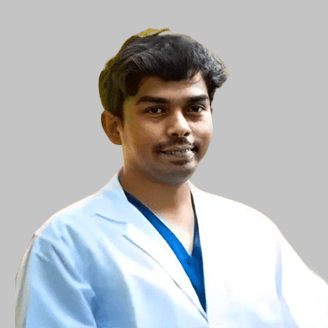
Dr. Santhosh Reddy K
MBBS, MD
Radiology
View More -
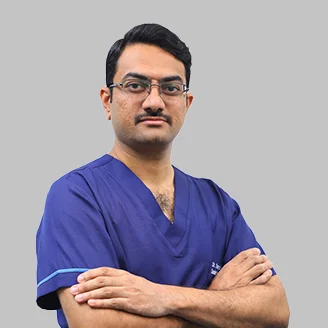
Dr. Surya Kiran Indukuri
MBBS, MS (General Surgery), DrNB (Vascular & Endovascular Surgery)
Vascular & Endovascular Surgery
View More -

Dr. Suyash Agrawal
MBBS, DNB (General Surgery), Fellowship in Diabetic Foot Surgery
Vascular & Endovascular Surgery
View More -
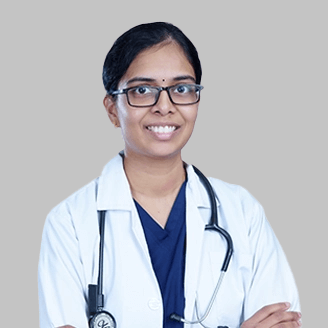
Dr. V. Apoorva
MBBS, MS (General Surgery), DrNB Vascular surgery
Vascular & Endovascular Surgery
View More -
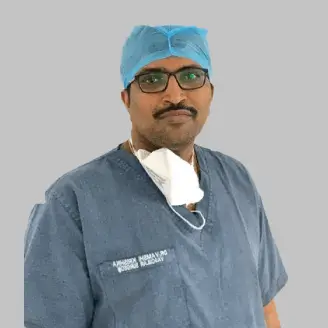
Dr. Vamsi Krishna Yerramsetty
MBBS, DNB, FIVS
Vascular & Endovascular Surgery
View More -
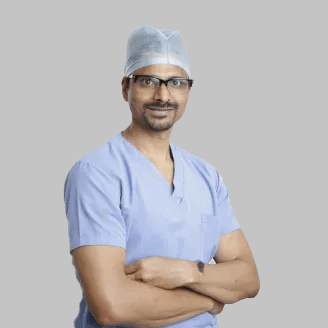
Dr. Venugopal Kulkarni
MBBS, MS, MRCS, FRCS
Vascular & Endovascular Surgery
View More
Frequently Asked Questions
Still Have a Question?

